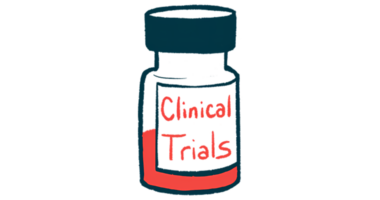Parkinson’s gene therapy reduced alpha-synuclein in animal models
Shape calls new data from preclinical testing of SHP-201 'compelling'

Shape Therapeutics’ SHP-201, an experimental gene therapy for Parkinson’s disease, significantly reduced the levels of alpha-synuclein — a protein that plays a key role in the development of the neurodegenerative condition — in the brain of mouse and nonhuman primate models, according to new preclinical data released by the company.
In nonhuman primates, the therapy candidate was delivered by intravenous, or into-the-vein, injection, using the company’s engineered viral delivery vector, called SHP-DB1. It entered the brain without triggering a significant immune response against it, Shape noted in a company press release, calling the laboratory results “breakthrough preclinical data.”
The findings were presented at the European Society of Gene and Cell Therapy (ESGCT) 32nd congress, held earlier this month in Seville, Spain.
“We are delighted to be able to share key breakthroughs at ESGCT, including compelling animal data in our gene therapy program for Parkinson’s disease,” said Adrian Briggs, PhD, chief technology officer and interim CEO of Shape Therapeutics.
Parkinson’s disease is caused by the progressive loss of dopaminergic neurons — the nerve cells responsible for producing dopamine, an important chemical messenger — which are primarily found in a brain region called the substantia nigra. The accumulation of toxic clumps of misfolded proteins, particularly alpha-synuclein, is thought to be a primary driver of neuronal loss in Parkinson’s.
Gene therapy for Parkinson’s shown to lower alpha-synuclein levels in brain
SHP-201 is a disease-modifying gene therapy that uses a small RNA molecule to reduce the levels of functional SNCA mRNA — the intermediate molecule derived from DNA that guides alpha-synuclein protein production. The goal is to reduce the levels of alpha-synuclein in the brain.
The gene therapy can be delivered using SHP-DB1, a next-generation adeno-associated virus type 5 (AAV5) designed to increase its capability to cross the blood-brain barrier, or BBB — a tight layer of cells that line the brain’s blood vessels. The BBB impedes potentially harmful substances, such as bacteria, from entering the brain, but also blocks certain medications from getting where they’re needed.
According to Shape, SHP-DB1 also offers a better immunological profile compared with AAV9, another viral vector commonly used to target the central nervous system (CNS), comprised of the brain and spinal cord. People have been shown to develop antibodies against AAV9, which may block the action of a potential gene therapy.
In nonhuman primates, intravenous administration of SHP-DB1 demonstrated a broad and efficient targeting of neurons in the brain, including in deep brain regions like the substantia nigra. In this brain region, the viral vector was able to reach and target 96% of neurons, the data show.
In human-derived neurons and in the brains of adult mice, SHP-201 led to a strong reduction in the levels of alpha-synuclein, by more than 80% in the cells and 50% in the animal model.
Additionally, delivery of SHP-201 using SHP-DB1 in nonhuman primates significantly reduced functional SNCA levels across multiple brain regions, with reductions exceeding 70%, particularly in the substantia nigra. The treatment also appeared to be well tolerated across species, per the data.
“By combining our protein-free RNA-editing payload and engineered AAV delivery technologies, Shape has built a unique drug paradigm, which is one-and-done gene editing that leaves the genome intact,” Briggs said.
Overall, according to Shape, these new data “[support] the therapeutic development of a first-in-class disease-modifying treatment for Parkinson’s.”







